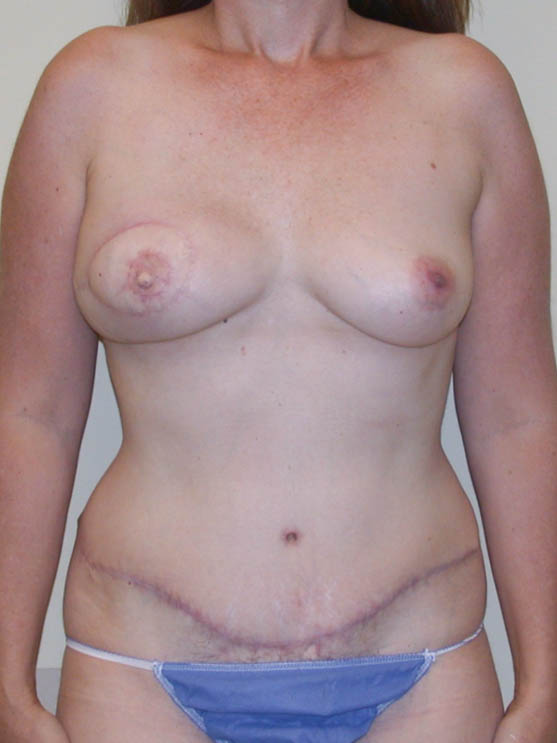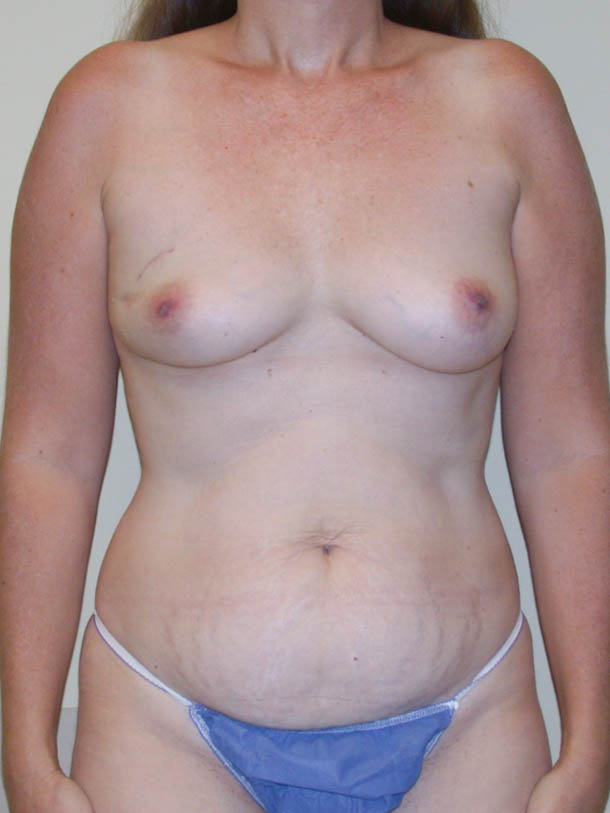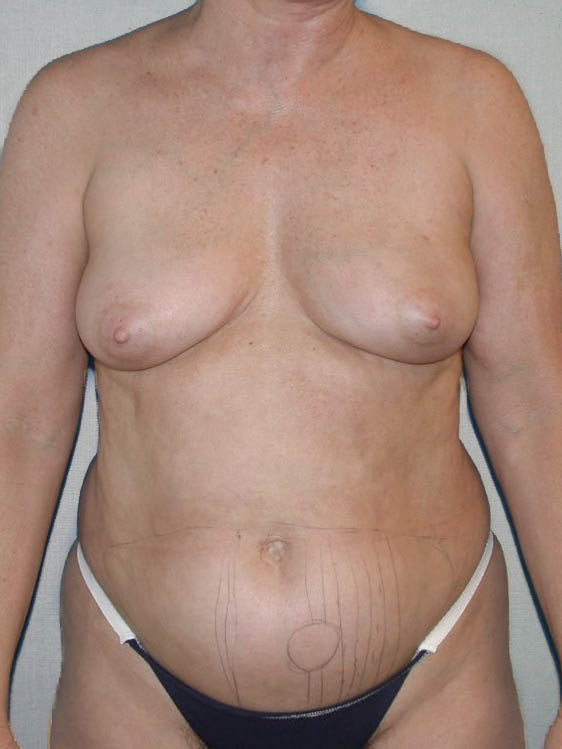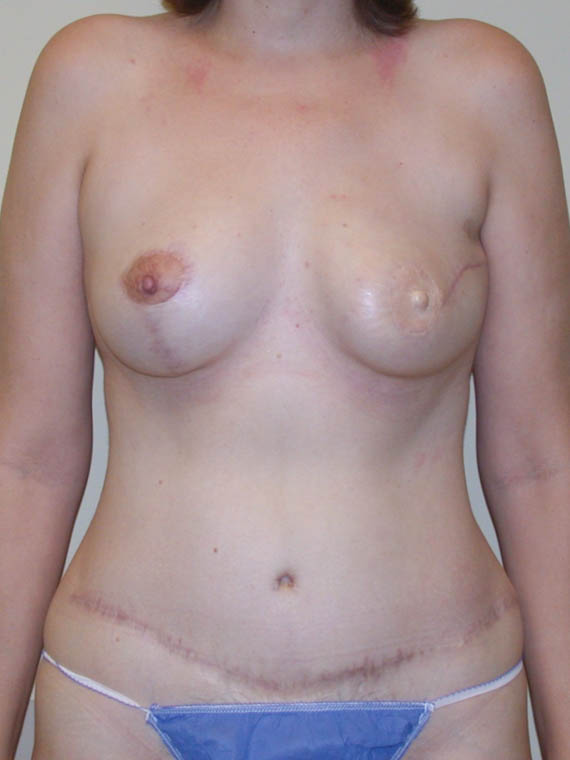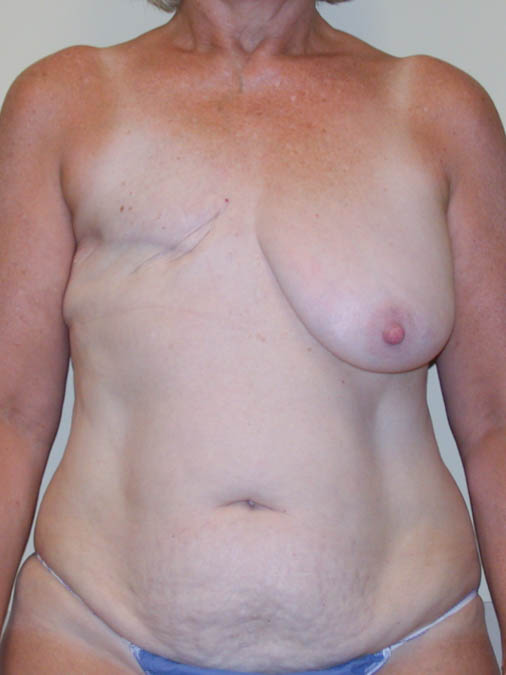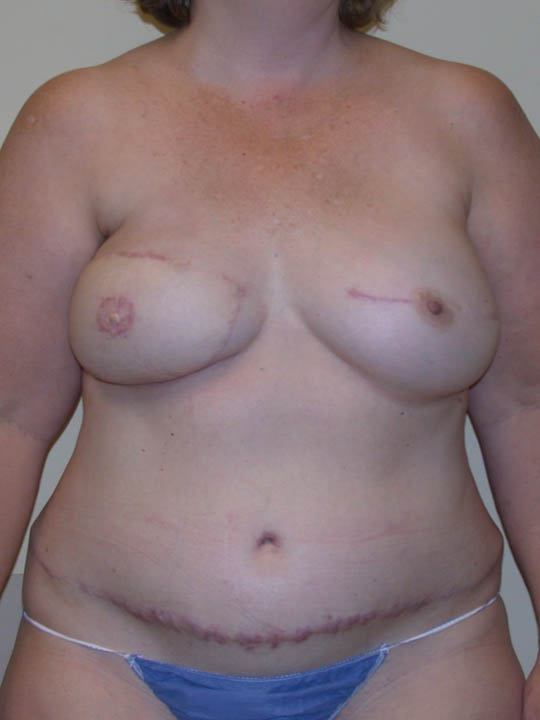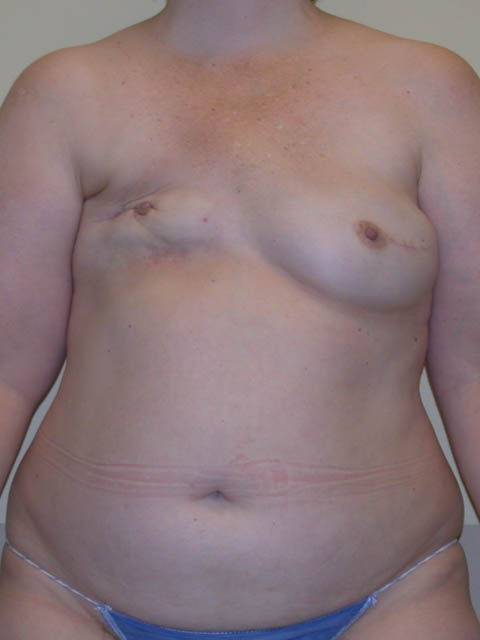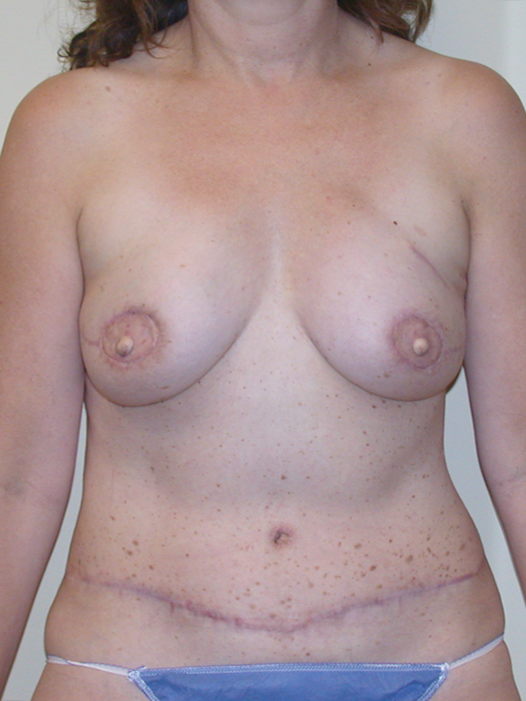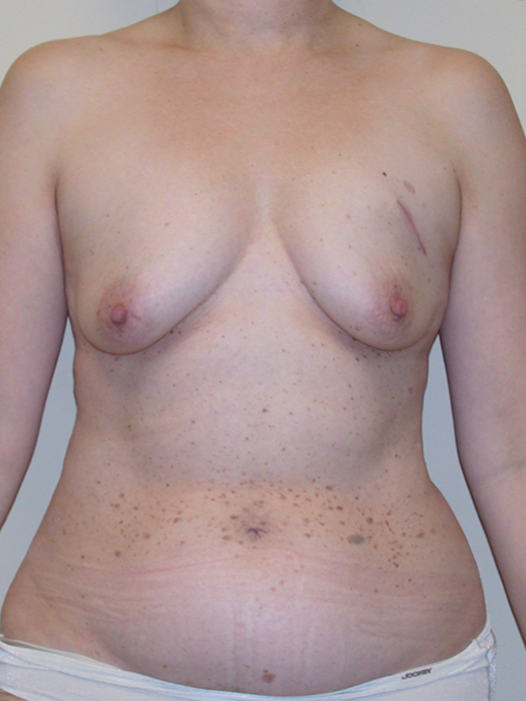The Deep Inferior Epigastric Perforator, or DIEP flap, is a microsurgical procedure used for breast reconstruction. This procedure, in the appropriate patient, is Dr. Rosenberg’s preferred method for breast reconstruction. With this procedure, the patient is able to use her own abdominal tissue for breast reconstruction without the sacrifice of the abdominal musculature required in the TRAM flap procedure.
Small blood vessels course through the substance of the Rectus abdominus (six-pack) muscle to provide blood supply to the skin and fat of the abdomen. This skin and fat is typically removed in women seeking cosmetic abdominoplasty (tummy tuck surgery). In the DIEP procedure, the blood vessels are traced through the muscle and then the skin and fat of the abdomen are transferred to the chest to reconstruct the breast. This requires that these small blood vessels (2-3 mm in diameter) be sewn to blood vessels in the chest using the surgical microscope. In essence this is a transplantation of tissue from the abdomen to the chest in order to reconstruct the breast lost to breast cancer.
The advantages of this type of reconstruction are numerous. First, it allows a woman to replace the skin and fat of the breast tissue with similar tissue from the abdomen. In most cases this provides the most natural appearing and feeling reconstructed breast. The transplanted tissue will gain and lose weight, and will most closely mimic a natural breast on the other side. Once the reconstruction is complete, there are no required procedures for maintenance that one might have with implant-based reconstruction. Also, the risks of abdominal complications of hernia or bulge often seen in the traditional TRAM flap are minimized.
The DIEP procedure can be performed at the same time as mastectomy (immediate reconstruction) or as a delayed reconstruction after other cancer therapies are complete. The length of the DIEP operation is typically 4-6 hours and the hospital stay is typically 3-4 days.


